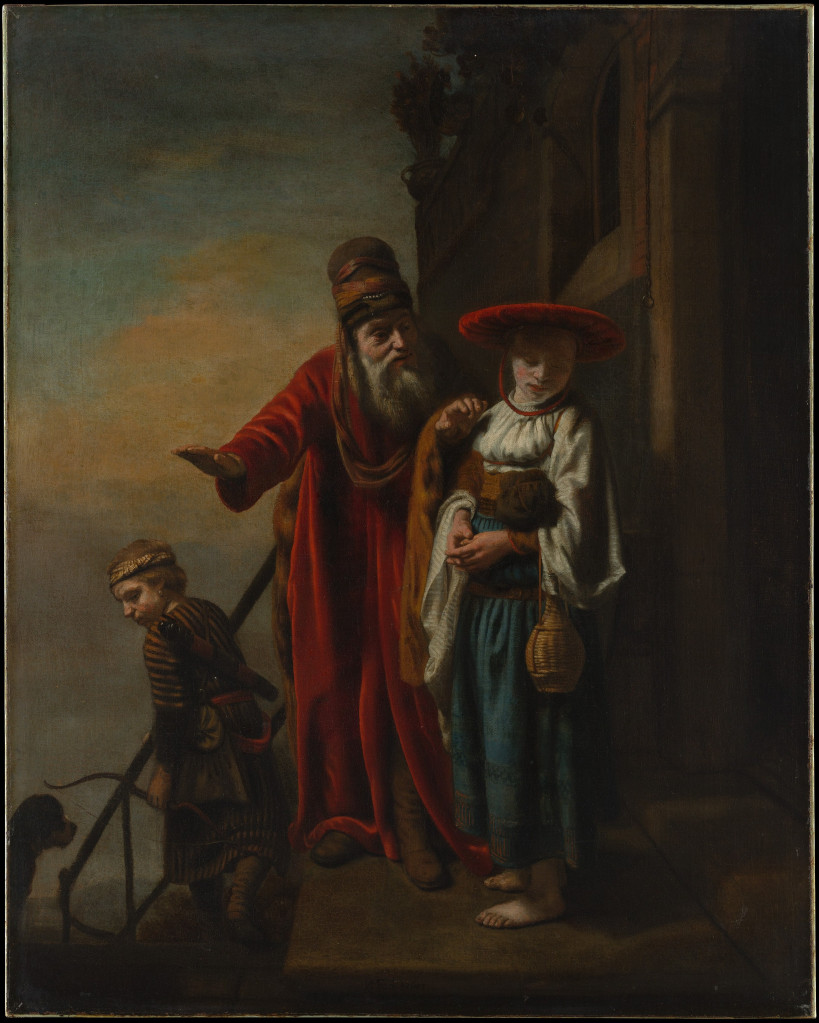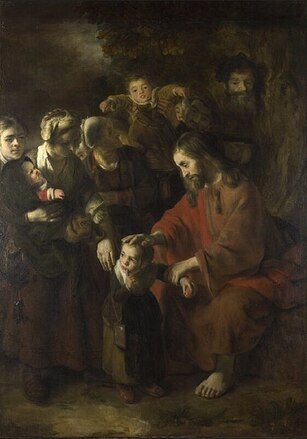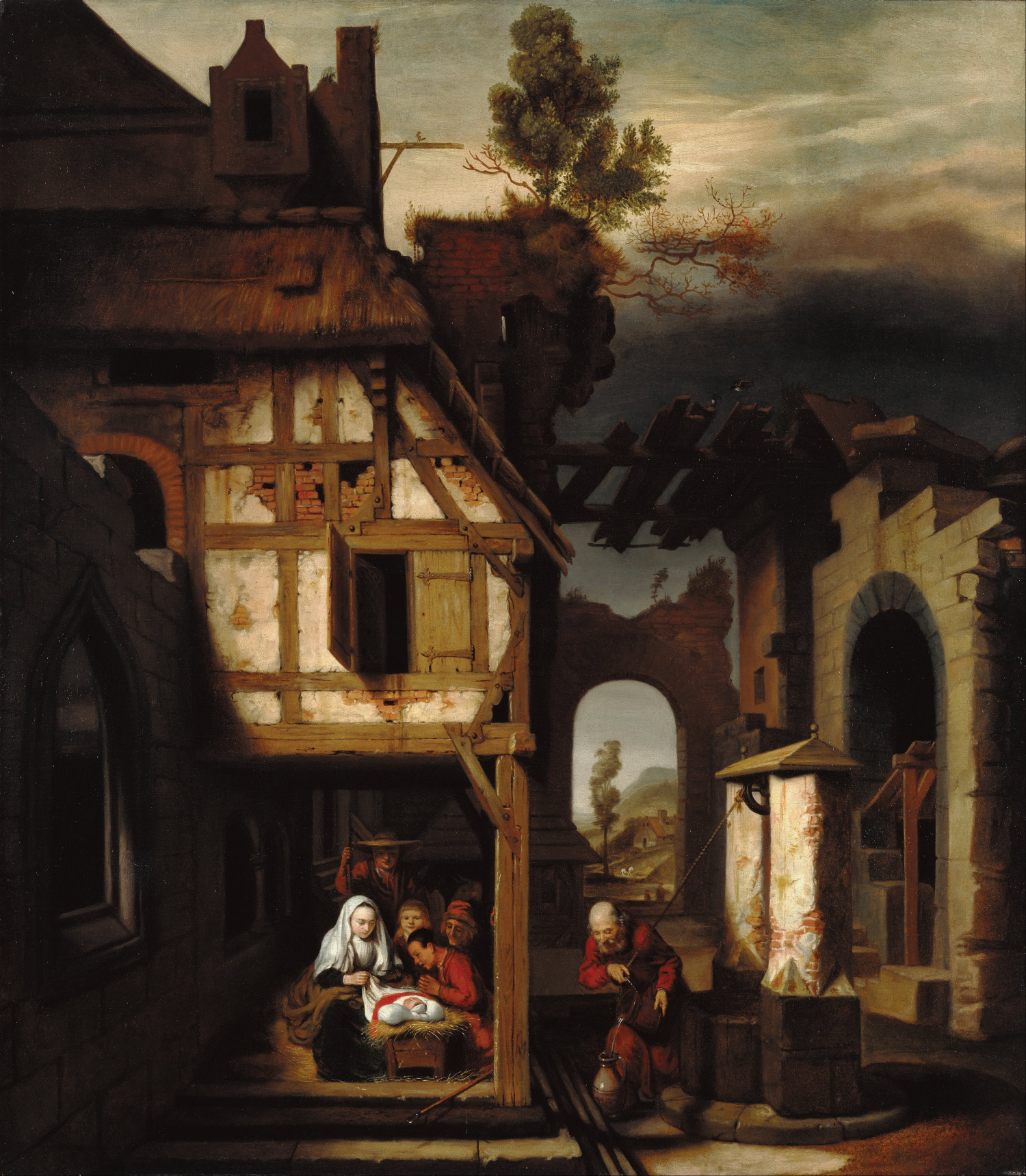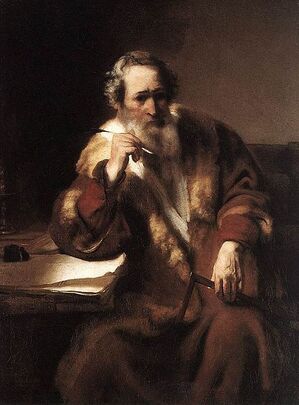|
When the National Gallery reopened last year, they began with a free exhibition about the little known Dutch painter, Nicolaes Maes. Having learnt from the great master of painting, Rembrandt, Maes produced over 1000 artworks, 900 of which were portraits. This exhibition only contained 50 artworks but managed to provide a detailed journey of Maes’ artistic progress, beginning with historical and biblical scenes and ending with depictions of everyday life. It is not easy to put Maes’ earlier works into chronological order because he tended not to sign or date them. His earliest signed and dated painting is Dismissal of Hagar and Ishmael, which he produced in 1653 during his final year with Rembrandt. Loosely based on an etching by his master, Maes managed to convey the scene in an original manner. The painting shows a scene from the Book of Genesis. Hagar, Abraham’s concubine, is being dismissed along with her son Ishmael. Abraham’s wife had given Hagar to him so that he could produce an heir. Fourteen years later, Abraham’s wife Sarah miraculously gave birth to a boy, Isaac. Concerned that Ishmael would receive her son’s rightful inheritance, Sarah commanded Abraham to get rid of Hagar and Ishmael. The constrained emotion on both Abraham and Hagar’s faces suggests neither of them was happy with the outcome. Christ Blessing the Children is considered to be Maes’ earliest surviving painting, although initially wrongly attributed to Rembrandt due to the similarity in style and lack of a signature. It is also of contrasting size to the other artworks Maes produced while in Amsterdam. His paintings were “cabinet size”, but this biblical scene is much larger with a height of 81.1 inches (206cm) and a width of 60.6 inches (154cm). Maes took inspiration for this painting from the Book of Mark when Jesus says, “Let the children come to me. Don’t stop them! For the Kingdom of God belongs to those who are like these children. I tell you the truth, anyone who doesn’t receive the Kingdom of God like a child will never enter it.” (Mark 10:14-15) Following this, Jesus blessed every child in his presence. The majority of Maes’ surviving early works are religious. Biblical stories include the Sacrifice of Isaac (Genesis 22), The Death of Absalom (2 Samuel 14), Christ before Pilate (Matthew 27) and The Adoration of the Shepherds (Luke 2). Maes painted the latter after he had left Rembrandt’s studio and used an engraving by Albrecht Dürer (1471-1528) as a basis. Maes made a faithful copy of the engraving to the tiniest detail. The proportions are exact and the colour and shading he added to the image highlight the holy family and their visitors. One of Maes’ religious paintings extends beyond the Bible. Using his imagination and traditional beliefs, Maes experimented with portraiture by painting The Apostle Thomas. The apostle, sometimes known as Doubting Thomas, established seven churches in India between AD 52 and AD 72. Maes imagined what the older man looked like during his mission in India and, at first, the portrait appears to be of a reticent elder. Painted in the manner of Rembrandt, Maes indicated the man’s identity with the subtle inclusion of a set square in his left hand. As well as being one of Jesus’ disciples, Thomas was a builder or carpenter, a profession that used a set square for accurate measurements. Some traditions believe Thomas was martyred by a spear that had a head resembling the set square, which has since become his symbol in works of art. If you would like to read the full article, click here! This blog post was published with the permission of the author, Hazel Stainer. www.hazelstainer.wordpress.com
1 Comment
6/17/2021 09:40:20 pm
Religious paintings are one of the best paintings one can make. It is not only a holy act but it is something that purifies our soul. I always find interest in such projects. Keep up this good work.
Reply
Your comment will be posted after it is approved.
Leave a Reply. |
©Copyright
We are happy for you to use any material found here, however, please acknowledge the source: www.gantshillurc.co.uk AuthorRev'd Martin Wheadon Archives
June 2024
Categories
All
|




 RSS Feed
RSS Feed